Taros, which are soft like potatoes yet chewy due to their sticky mucilage, are an old ingredient mostly eaten in autumn in Korea. The starchy tubers, called toran in Korean, are much more versatile than commonly known.
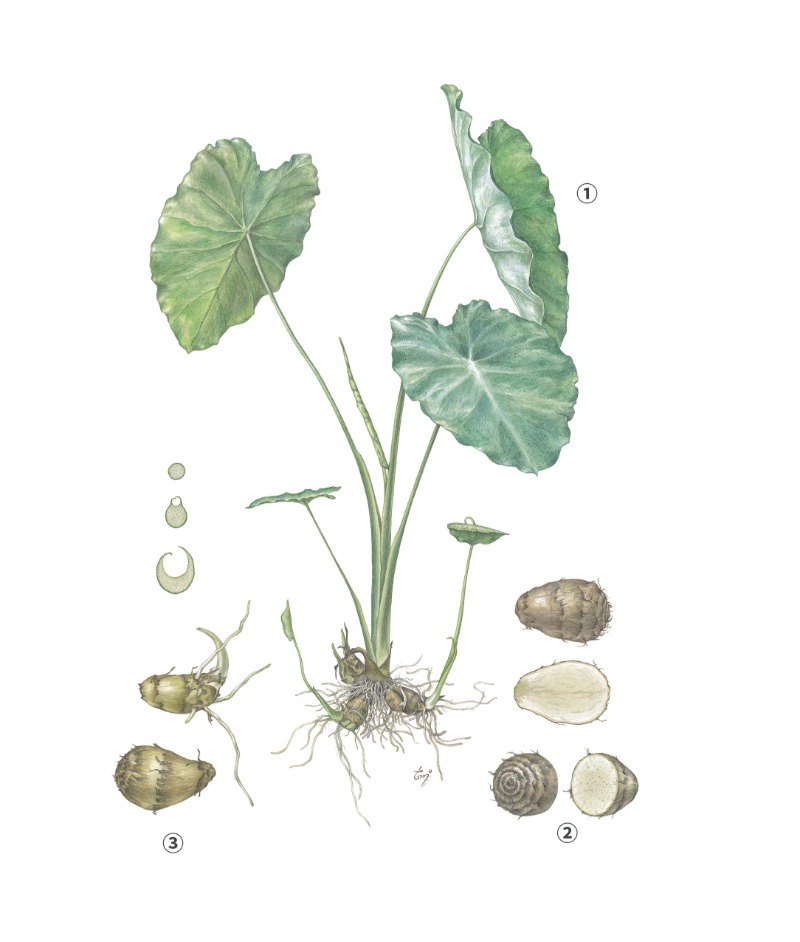
① Taros, generally grown in fields, have a large leaf attached to the end of a thick stem. They are a versatile ingredient, no part of which is wasted. Well-dried taro leaves are eaten as namul (greens) or ssam (leafy green wraps) in the summer. The stems are slightly dried and peeled, briefly boiled and stir-fried with perilla seeds to make a side dish with a crispy texture. Taro tubers (the root) have a unique, slippery texture that is not to everyone’s liking, but has a distinctive quality unlike any other ingredient.
② The sticky substance in the cross section of a taro tuber is mucin, a polysaccharide mucilage which breaks down protein to aid digestion and absorption. Mucin is also found in eels, lotus roots and yams, and is an excellent lubricant for the stomach and intestines.
③ The needle-shaped calcium oxalate crystals contained in taro starch cause itching and produce an acrid taste. To deal with itch-producing taro skin, quickly boil the taros in rice water and peel the skins by rubbing them off.
ⓒShin Hye-woo
Food is like a riddle, each food item hiding many facts. Think of a taro, for instance. When peeled, the tuber looks very much like a potato. How, then, did it end up with a totally different name?
When taros first appeared on the Korean peninsula, gamja, the Korean word for potatoes, didn’t yet exist. Taros were dubbed toran because they looked like eggs from the earth (to meaning “earth” and ran meaning “egg”). Written records say potatoes were first introduced to Korea around 1824, during the late Joseon Dynasty. But mention of taros can be traced back six centuries to a Goryeo Dynasty medical book from 1236, titled “Emergency Preions in Local Medicine” (Hyangyak gugeupbang). Similarly, “Collected Works of Minister Yi of the Eastern State” (Dongguk isang gukjip), an anthology of prose and verse on a diversity of topics written by Yi Kyu-bo and dated 1241, notes that taro soup was cooked in the countryside.
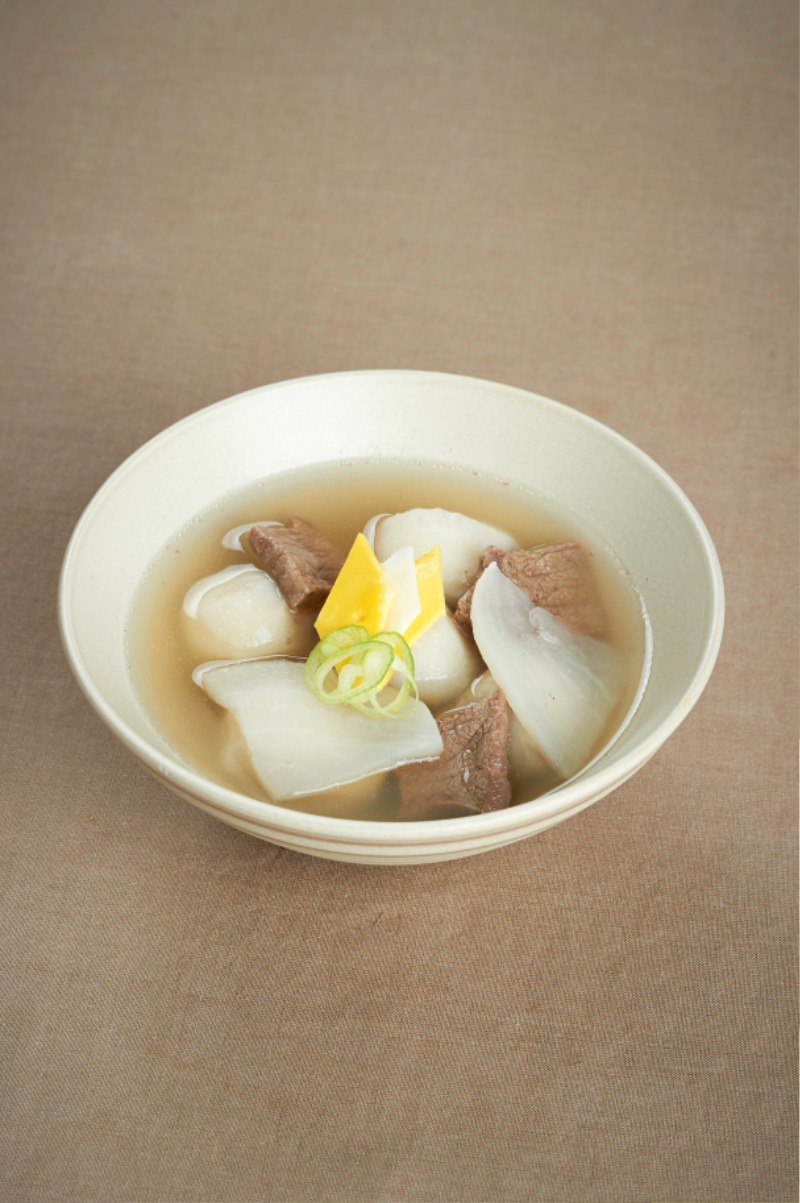
Taro soup is marked by the unique, slippery texture of taro. Clear soup made with beef, radish and taros, and seasoned with soy sauce has a simple but deep flavor. It is a traditional dish that is mainly eaten at Chuseok, the autumn harvest festival.
© Korean Food Promotion Institute
Wisdom for Detoxification
Like the potato, the taro is a stem tuber. Tubers are plants with bulbous underground structures for storing nutrients, from which the roots and stems grow. In Korea, taros are traditionally eaten on Chuseok, the autumn harvest festival held in the eighth lunar month. “Recipes for Korean Dishes” (Joseon yori jebeop), a 1917 cookbook by Bang Sin-yeong (1890-1977), includes a recipe for toranguk, or taro soup: “Wash the taros well and boil them. Add them to clear soup or beef bone broth and boil with a few pieces of kelp.” This is a Seoul-style taro soup recipe. In the southern provinces, taros are boiled in a savory broth made with ground perilla seeds.
At first glance, taros cooked in soup look much like potatoes. But when you put one in your mouth and chew on it, the texture is completely different. Because taros are rich in sticky mucilage, they have a slippery, squashy feel. Some people hate taros because of this texture, but most forms of mucilage are good for our health. The polysaccharides that make up the mucilage in taros act as prebiotics – plant fiber that is a source of food for beneficial intestinal bacteria. These polysaccharides easily absorb water and swell in size. One study shows that thanks to this property, mucopolysaccharides can be used to make orally disintegrating tablets (ODT), which dissolve on a patient’s tongue without water.
Aside from water, the most abundant property in taros is starch. The starch granules in taros are small and digestible, but can’t be eaten raw because they contain sharp, needle-like calcium oxalate crystals. Taro leaves and stems also contain calcium oxalate crystals, which are stored together with proteolytic enzymes, giving them an acrid taste when eaten raw. First, the needle-like crystals pierce and wound the mucous membrane of the skin. Then the enzymes act on the wound, causing inflammation and pain. Therefore, it’s important to wear gloves when handling taros; getting taro juice on your hands can make them itchy.
Such toxicity is a common characteristic of plants in the arum family (Araceae). Animals avoid eating them because they can’t avoid the pain and itching on their mucous membranes. It’s why the plants are known to thrive even on islands where goats graze. But humans are unique omnivores; we can overcome the toxicity of taros by cooking them with fire.
Taros or taro stems are soaked in water for a day, then boiled before being used to cook any dish. The thick water left behind is discarded. When pre-heated in this way, the enzymes in taros denature and stop working, and the oxalate crystals dissolve in the water and are removed. They don’t go away completely, but the irritation is reduced enough to make taros edible. If one buys taros or taro stems in the fall and, unaware of this process, boils them in soup right away, they will still have an acrid taste and be difficult to eat.
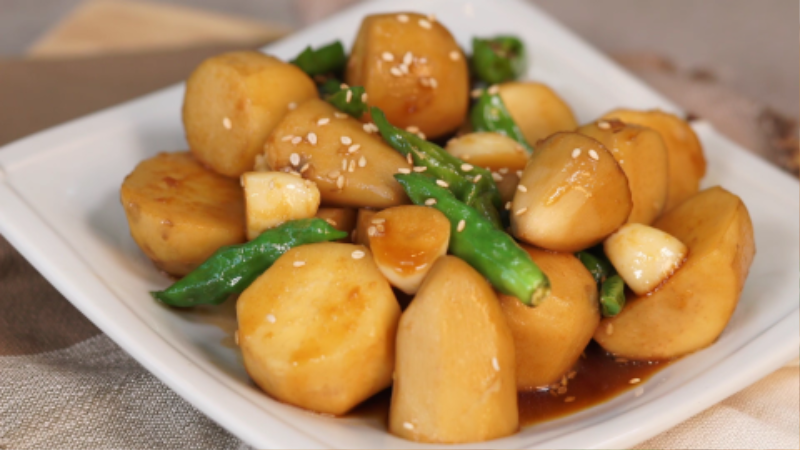
A dish made of taro cut into bite-size pieces and boiled down in soy sauce and sugar with green shishito peppers and whole garlic. It has a deep, savory flavor, especially when eaten with the boiled down sauce.
© 10000recipe
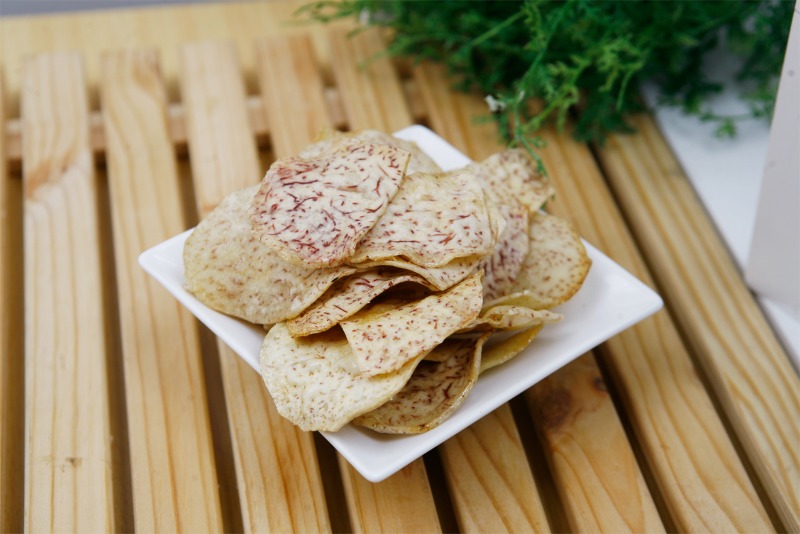
To get rid of the acrid taste of taro, boil briefly, cut it into slices and bake them to make chips with a crispy texture and savory taste. Low in calories, this makes a good diet snack.
© momcooking
Diverse Dishes and Desserts
Koreans refer to something solid and substantial in content as being like altoran – taros that have been cleaned of their hairy skin. The prefix al- denotes something that’s been removed from anything that either wraps around or is attached to it, as in albam (peeled chestnut) and almom (naked body). Until the advent of potatoes and sweet potatoes, taros were a very important crop for farmers to reduce hunger. In this context, it can be understood why altoran became synonymous with substance.
Despite being a food ingredient with a long history, taros are only eaten during the autumn holiday season in Korea. They begin to appear in markets in September, but are hard to find after the Chuseok holiday, when taro soup is a popular traditional dish. In the past, however, taros were cooked not only in soup, but served steamed, grilled, pickled, or even used to make songpyeon (half-moon shaped rice cakes). They were also steamed, peeled, mashed and mixed with glutinous rice flour before being pan-fried to make taro cakes, and mashed taros were even mixed in a batter with other vegetables and pan-fried. These days, it’s much easier to find taro stems than taros themselves because the stems are used in yukgaejang (spicy beef soup). The peeled and dried stems are boiled in water and then soaked in cold water for several hours to remove the acrid taste. They are then boiled together with assorted other vegetables and beef to make the spicy soup. The taro stems are as chewy as beef but in a subtly different way, which makes the soup taste even better.
Taros are mainly grown in Gokseong County, South Jeolla Province, which accounts for half of Korea’s taro fields and more than 70 percent of total production. Gokseong is also where an array of taro dishes can be tasted. Perilla taro soup, made with plenty of ground perilla seeds, is a signature dish of Gokseong, the fragrant aroma of taros blending well with perilla and beef. Clear taro soup, steamed taros, taro pancakes, taro flour and scorched taro are also worth trying. There are many processed products on offer as well, such as taro bread, taro scones, taro cookies, taro chips and taro chocolate chips. Recently, ice cream and apple pie made with taro are also available. These are snacks developed for young people who are unfamiliar with taros.
However, those young people who have never tasted taro soup may already be familiar with the taste of taro if they have tried taro bubble tea or taro milk tea. Toran, the Korean variety of the taro plant (Colocasia esculenta), is native to tropical Asia and the Pacific Islands. Depending on the cultivation area and variety, taros may be white or purple, but they all have a sweet and savory taste and a soft texture. There are numerous dishes, desserts and processed foods made with taro all over the world, from Asia, Africa, Europe and the Americas to island nations in the Pacific such as New Zealand. There is enough of a variety, so one can travel around the world tasting many different taro-based foods.
Those young people who have never tasted taro soup may already be familiar with the taste of taro if they have tried taro bubble tea or taro milk tea.
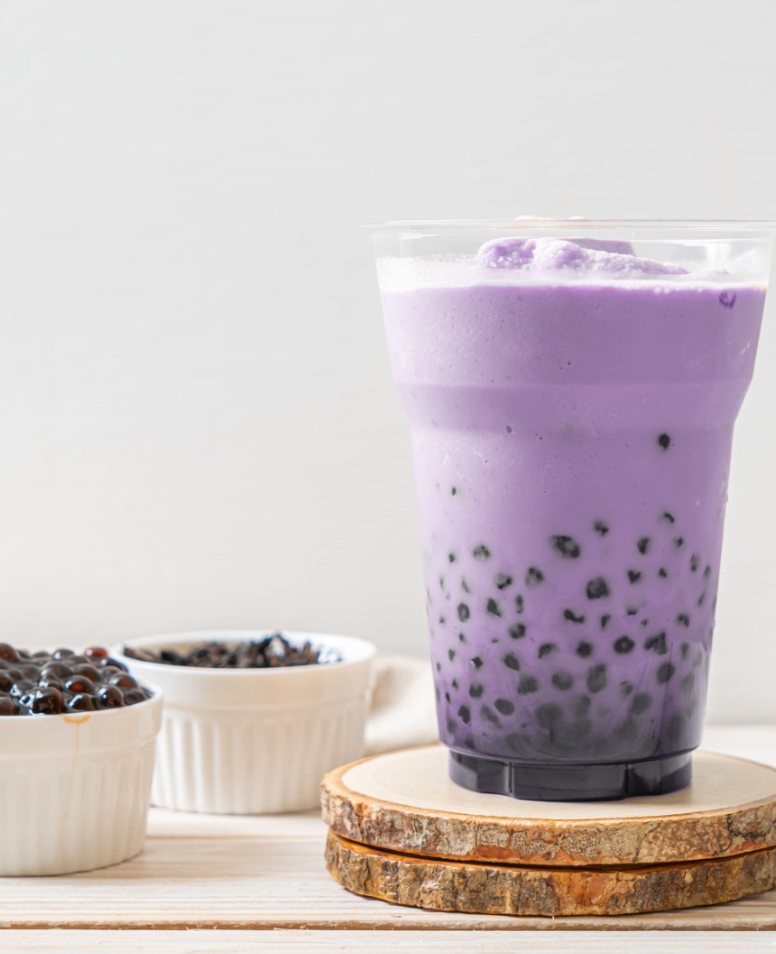
Toran is the Korean name for a variety of taro cultivated in the tropics, which is eaten around the world under various names such as taro, kalo, talo, dalo, dasheen and eddo. Also called the “tropical potato,” taro grows well in wet climates and swamps. Even the younger generation who may not know taro as a food might be familiar with taro tea made by mixing taro powder and milk.
© Sutterstock
TARO FLOWERS' WARNING
Toryeon is another Korean name for taros. The name comes from the plant’s thick, broad leaves resembling lotus leaves (ryeon meaning “lotus”). For many older Koreans, the sight of taros brings back memories of their childhood in the countryside, when they carried a taro leaf over their heads on a rainy day in place of an umbrella. On the contrary, not many people have seen the taro f lower. In the past, taro f lowers were so rare that they were said to bloom once every hundred years.
As taro is a tropical plant, it didn’t f lower easily in Korea’s temperate climate. However, starting about a decade ago, taro f lowers have bloomed annually in many places across the country. This is because the climate of the Korean peninsula is changing to a subtropical one, with high temperatures and humidity. The taro f lower is another warning that global climate change demands urgent and effective response.